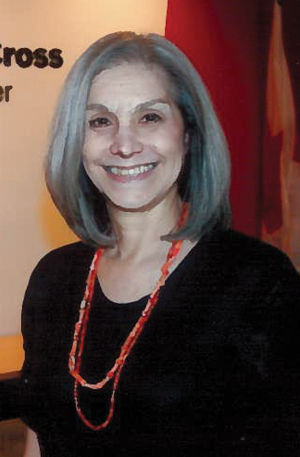Fight for voting rights is ongoing
Published December 9, 2015
Recently, I was invited to a 50-year reunion. No, it wasn’t high school or college, nor was it a wedding anniversary. It was the 50th anniversary of the signing of the Voting Rights Act of 1965, one of the most significant pieces of legislation passed in the 20th century.
The gathering was for those of us who joined the Southern Christian Leadership Conference’s summer program (SCOPE) in which college students were recruited to register voters all over the South.
Back then, we began with an intense week in Atlanta for an orientation with the likes of the Rev. Martin Luther King Jr., Hosea Williams, Andrew Young, Ralph Abernathy and Bayard Rustin.
The orientation was a vital part of the effort. We discussed the kinds of scenarios we might encounter and how to react in various situations. Then we were sent out in small groups to our respective assignments. I was assigned to Southampton County, Virginia, the home of Nat Turner and the largest slave rebellion in U.S. history.
The Voting Rights Act of 1965 was a groundbreaking piece of legislation that changed the political character of the country. In the past 50 years, the number of African-Americans elected to public office has increased dramatically.
But today, that piece of legislation is under threat. Yes, it is true that the 15th Amendment to the Constitution granted all U.S. citizens the right to vote. But many states, mostly in the South, adopted their own “prequalifications” before allowing all people that right. These included the poll tax (unaffordable to many African-Americans and poor whites) and literacy tests, often unnecessarily difficult and designed to disproportionately eliminate African-Americans from voting.
We owe President Lyndon B. Johnson a tremendous debt of gratitude for ushering through Congress both the Civil Rights Act of 1964 and the subsequent Voting Rights Act of 1965. The Voting Rights Act was specific about which states (and which counties within those states) had a record of imposing unfair restrictions. Most were in the South, but there were counties named in several parts of the country.
The Voting Rights Act declared those “prequalification” tactics illegal and required that any state contemplating a change in its state’s voting qualifications must seek prior approval from the Department of Justice. This provided a system of monitoring, called preselection, that helped ensure the fair implementation of the law.
However, in 2013 the Supreme Court ruled 5-4 that such a stipulation was no longer necessary because, as Chief Justice John Roberts stated, “The situation has changed in many states.”
The implication was that things had sufficiently improved in so many states that preselection was no longer necessary.
There was a public outcry from those who understood the significance of the ruling. They accused the Supreme Court of gutting the Voting Rights Act and setting the stage for a reversal of progress in this area. Indeed, since the Supreme Court Ruling, some states have followed up by imposing more restrictions on voting, such as picture identification. Local politicians largely argue that they only want to prevent voter fraud, in spite of the fact that voter fraud has been very rare since 1965.
If we return to the status of states’ rights on this issue, it is a major step backward. The 15th Amendment was passed shortly after the Civil War. Are we to delude ourselves into thinking that all states will guarantee a fair right to vote for all of their people?
For those who argue against too much involvement by the Federal Government, one need only to experience what I did in 1965 in Southampton County: a drive-in movie with both “colored” and “white” entrances, and a wall in the parking area to separate the cars. Thanks to the Civil Rights Act of 1964, that wall no longer exists. But there is no resting on the laurels of the past.
Jews have long played a strong role in civil rights. We will long be haunted by the deaths of three young volunteers — James Chaney, Michael Schwerner and Andrew Goodman — an African-American and two Jews who were murdered in Mississippi in 1964 by the Ku Klux Klan because of their civil rights work.
At the time, the president of the NAACP was Kivie Kaplan. At one time, Rabbi David Saperstein was the only nonblack member of the board of directors of the NAACP. And this is not to mention the disproportionate number of Jews, rabbis and others who were in the forefront of the civil rights movement.
I remember one particular day when we were driving around to pick up people to take them to the local courthouse to register to vote. One woman, almost 90 years old, was waiting for us outside on a scorching hot day.
She said, in a strong voice, “I’ve been waiting all my life to do this.”
Let us not allow, under our watch, another American to have to wait a lifetime to exercise the right to vote. Talk to your elected officials about this so they can be vigilant on our behalf.















